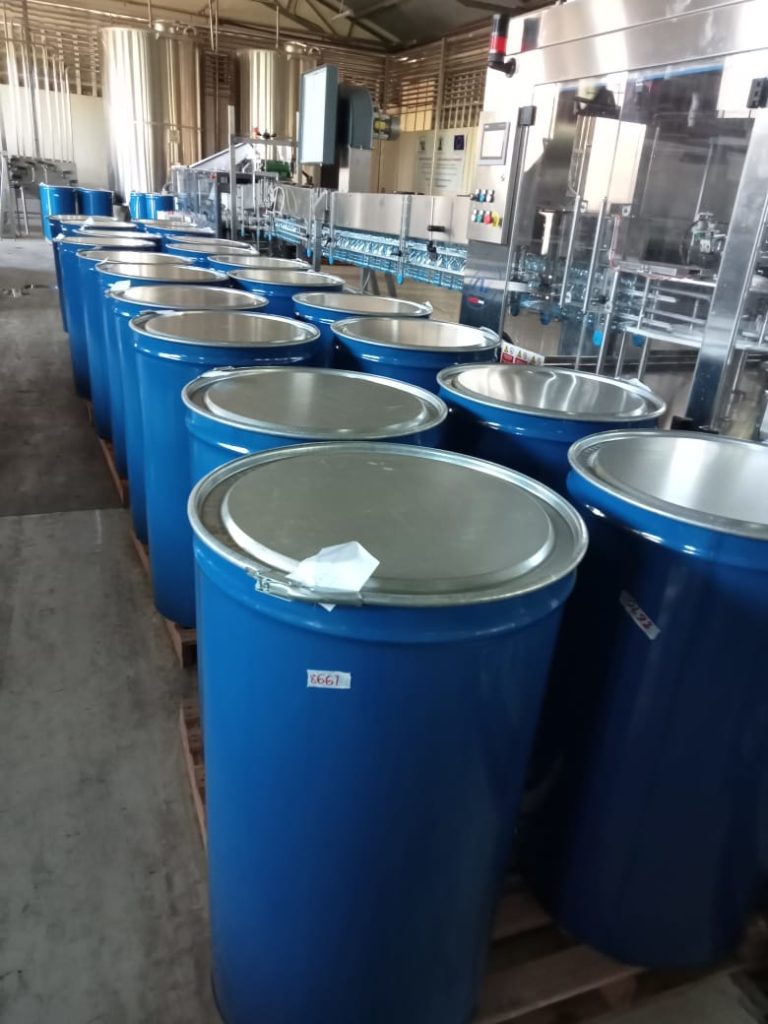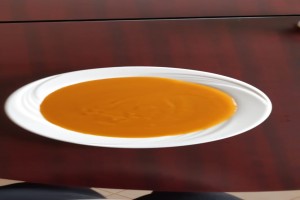As of 2022, the value of the global Mango Puree market had reached about US$ 1. 31 Billion and is expected to grow to US$ 2. 73 Billion by 2029- representing a CAGR of 11.06 %.
Yogurt and beverages are the two major products that are driving the growth of the mango puree market: For instance, the use of mango puree in beverages such as juices and beer is currently growing at a Compound Annual Growth Rate (CAGR) of 7.2 percent per year. That of yogurt as well as ice cream is growing at a rate of 7.8 percent, yearly.
The growth rate across the fruit puree market in the US currently stands at 6.2 percent and there is expectation that it will hold steady through the year 2030. That of mango puree and apple puree in the US is projected to grow at 6.6 percent.
Most of the mango puree for processing in the US comes from the largest producers of the pulp in the world, namely India (accounting for 75% global production in 2023), Mexico, Vietnam and Colombia.
Europe continues to be the main import market, accounting for 40 percent of the worldwide production of mango puree.
Based on current demand trends and other factors, the mango puree sector is slated to achieve an annual growth rate of 11.06 percent. Other projections put the mango puree market as likely to grow at a slower, augmented CAGR of 7.3%.
Kenya is one of the countries emerging as a producer of prime mango puree. The country produces a significant amount of mango fruits, and the volumes can comfortably support the production of mango puree. Selina Wamucii is facilitating the export mango puree from Kenya to various destinations around the world.
If you would like to explore importing mango puree from Kenya, please contact Selina Wamucii with the subject “Mango Puree from Kenya”.

Top 5 producers of mango puree including share of global market
These are the top exporters of mango puree globally:
1. India
India is the world’s leading producer of not only mangoes (38% of the global production) but mango puree as well, with their mango puree taking 75 percent of the global market share.
Since 2018, the south Asia nation has been producing 20 million tons of mango annually, with 500,000 metric tons out of this output going into mango puree production. The key foreign markets for India’s production include Europe, especially the United Kingdom (UK) and the Netherlands, and North America, especially the United States.
2. China
With an annual output of 5 million tons of fresh mango produce from the year 2020, onward, China has ascended to second position in mango puree production worldwide, albeit for local use only.
The expected growth rate is 7.6% in the next decade, positioning China as a major player in the global mango puree industry.
3. Mexico
Mexico produces about 2 million tons of mango fruits annually, but exports a small margin of its mango puree.The United States imports approximately 50,000 metric tons of mango from Mexico, mainly in the form of concentrates and frozen puree. The rest, around 7,000 tons, goes to the European market.
4. Colombia
Colombia produces 350,000 tonnes of mango fruits. Out of this output, 40,000 tons goes into making mango puree. The country exports between half and three-quarters of this tonnage, with up to 30,000 tons exported to the US, and a little of the rest going to European destinations.
5. Brazil
Though Brazil produces more mangoes than Colombia, it processes little of this into mango puree. Its annual output of mango puree is about 15,000 tons, with almost all the products reaching the cheaper-tariff United States’ market compared to the costlier market in Europe.
Kenya is also emerging as a producer of prime mango puree as the country produces a significant amount of mango fruits. Selina Wamucii has so far processed the export of over 1000 tonnes of mango puree to various destinations around the world.
If you would like to explore importing mango puree from Kenya, please write to info [at] selinawamucii.com with the subject “Mango Puree from Kenya ”. If you are already signed up on the Selina Wamucii produce platform, then please login to to send your request.
Top 5 global importers of mango puree
The list of the leading importers of mango puree globally has been fluctuating over the years. Japan and the Netherlands often change positions between third and fourth.
Here are the top importers;
1. United States
The US is the world’s biggest importing market for mango puree, accounting for a global share of 36.08 percent as of 2020.
The US’s import market for mango puree is expected to continue to grow in the coming years, as demand for mango-flavored products continues to increase.
2. Saudi Arabia
In 2022, Saudi Arabia imported over 10,000 tons of mango puree from nearby sources like India, Pakistan and Vietnam. This catapulted it to second position.
3. Netherlands
The Netherlands accounts for 45 percent of the European mango puree market share or 18 percent of the global market share.
The country receives mango puree from India and other countries. It is expected that the puree industry in the Netherlands will appreciate with the rest of Europe at 6 to 7 percent, annually.
4. Japan
Japan accounts for 7.25 percent of the global share of mango puree imports. In the month of July 2020, the country reached its highest value of imports that year at 32.70 million.
5. Germany
Germany is the fifth top importer of mango puree. In 2020, the import value reached its highest point at the start of the third quarter, in the month of July, at 16.78 million worth of imported value.
Top uses of mango puree
Mango puree is used in a range of culinary and health-related applications, with these related segments accounting for much of the growth of the industry. The top five applications of the puree of mango include:
1. Beverage sector
Enjoying the largest market share among products dependent on mango puree, the beverages sector is currently appreciating at an annual CAGR of 7.2 percent.
Mango puree is commonly used in the beverage industry to enhance the taste and texture of drinks. It is added to smoothies, cocktails, mocktails, and fruit juices to give them a sweet and tangy flavor.
The puree is blended with other ingredients to create refreshing and indulgent beverages. Its smooth texture and rich aroma make the drinks more enjoyable, while its vibrant color adds visual appeal.
2. Dairy industry
Second to beverages but fastest in growth rate (at 7.8%) among sectors using mango puree, the dairy sector is a huge consumer of mango puree.
Mango products do not enter the dairy sector directly but through processing intermediaries. These include, in the order of market share: yogurt in either a liquid or semisolid concentrate of mango puree, cream for making ice cream, and thickeners.
Mango puree adds a tropical and fruity flavor to these dairy products, creating a delicious taste experience. The puree is mixed with milk, cream, or yogurt to infuse the desired mango taste into the final product. It also contributes to the vibrant color and visual appeal of the dairy items.
3. Bakery and confectionery
Mango puree plays a versatile role in enhancing the flavors and textures of various treats. It is commonly used as an ingredient in cakes, muffins, pastries, and other baked goods.
The puree adds a tropical and fruity taste, infusing a delightful sweetness into the treats. Mango puree is also utilized in the production of fillings, glazes, and toppings for pastries and desserts.
Its smooth consistency helps maintain moisture in baked goods, contributing to their soft and moist texture.
Major types of mango used in the production of mango puree
1. Totapuri Mango
The Totapuri variety grows in Tamil Nadu and other states of India. The mangoes weigh 3.1 kilograms on average and produce a rich yellow paste when pulped.
2. Ngowe Mango
Similar to the Indian Totaturi (totapuri) mango, the ngowe mango is a rich pulpy variety that makes thick concentrates. Large, oval-shaped and tapered, the ngowe cultivar grows in the Central and Eastern highlands of Kenya.
3. Apple Mango
Rich-tinted with a smooth yellowish-orange skin, the apple mango is a pulpy variety with a round-to-oblong shape. It’s also produced heavily in Kenya.
4. Alphonso Mango
Alphonso mango puree grows in many parts of India especially Andhra Pradesh. It is one of the most prized sources of mango puree worldwide.
5. Kesar Mango
Kesar mango grows mostly in the Indian states of Tamil Nadu and Andhra Pradesh. With its thick, yellow paste when pulped, this variety is a common accompaniment with yogurt and sugar-based confectionery.
6. Tommy Atkins
With its prized long-term storage and long-distance bruise-free transportation qualities, the Tommy Atkins is a global favorite puree-making cultivar. It’s excellent in yields and produces equally excellent pulp in a yellow hue.
In terms of seasons, India produces its puree at the peak season of its mango harvest around April through July while the rest of the tropical countries in South America and Africa dominate the rest of the year.
The mango season in Kenya, for example, starts around the month of October when the Tommy Atkins variety starts, followed by Apple Mangos and Ngowe mango in November. This season runs to around February.
Getting the terms right: Mango Puree, Mango Pulp, Mango Concentrate
As the mango fruit can be processed into many products, some common names can get confusing. So let’s do some quick clarifications:
1. Mango puree
Mango puree is the semi-liquid extract from the pulp of cross-sectioned mango fruits. The extraction process involves halving the washed fruit under strict phytosanitary conditions. Then each of the peeled cross-section goes under a pulping machine which squeezes out the juice. The product is then heated or pasteurized at 82 degrees Celsius before packaging it for long-term use.
2. Mango pulp
Mango pulp is the thick, syrupy content that forms into a chunky jelly after crushing the ripened flesh of the fruit. It is mainly composed of starch, pectin sugar and fibers. This yellow paste is extracted by first washing and peeling the fruit, then crushing the flesh by hand or in a mixer. Unlike a puree, which is fine-textured and smooth, mango pulp is thick and has solid chunks of flesh in it.
So the difference between mango puree and mango pulp is that mango puree is a smooth and homogenous liquid, while mango pulp is the soft, juicy, and slightly coarser content of the fruit.
3. Mango concentrate
Mango concentrate is a condensed form of mango puree or pulp, where water is removed to increase its flavor intensity and shelf life. The removal of water which makes 90 percent of juice occurs through aseptic evaporation means such as heating. Though the concentrate might lose some of the flavor in the process, it is quite healthy and may sometimes be mixed with puree to make concentrated puree.
